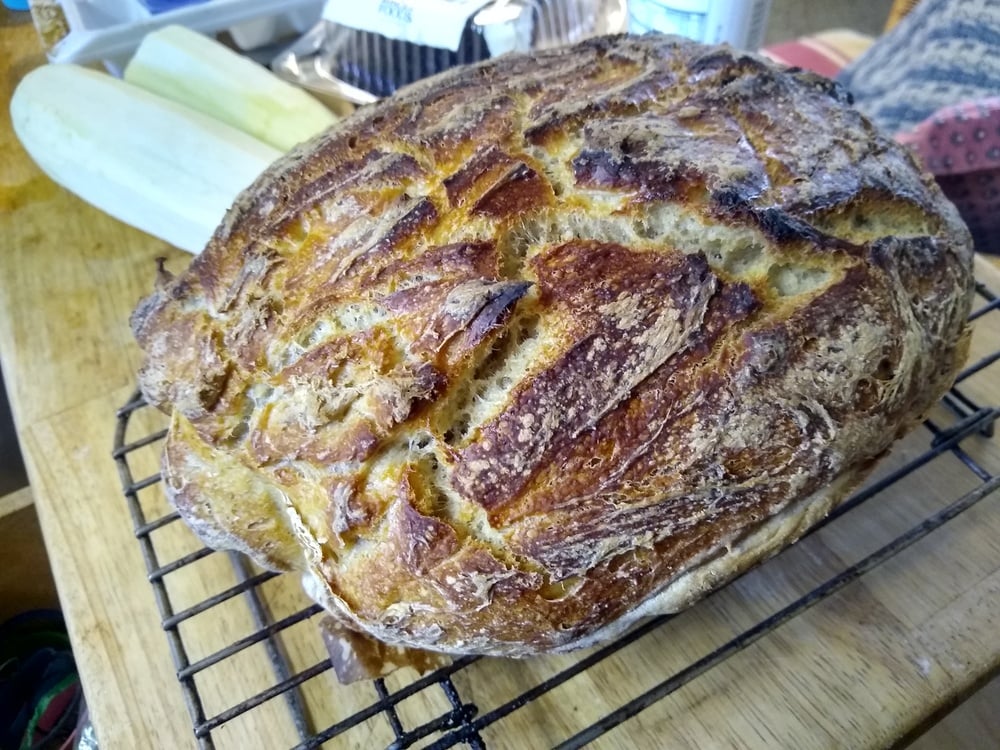this post was submitted on 04 Sep 2023
31 points (97.0% liked)
Sourdough baking
1420 readers
1 users here now
Sourdough baking
founded 2 years ago
MODERATORS
you are viewing a single comment's thread
view the rest of the comments
view the rest of the comments

Refrigeration slows but does not stop autolysis. Peter Reinhart use over night refrigeration during the fermentation (rise) to improve flavour. I can’t remember if it was him or Ken Forkish who provides a process with no traditional kneading, that I adapted as below.
Here’s my process: mix 4 cups flour, 2 cups water and sourdough starter (1/2 or 1 cup). Let sit for 30 minutes (autolyse). Add 2 tsp salt and 1/2 tsp yeast (if using any dry yeast) and mix it in. The dough is quite tacky, so I wet my hands and use pinching motion to mix, then stretch and fold it over itself. Repeat this for about five minutes. (Wash your hands with cold water to remove dough; warm water turns it to glue.) Let rest for 30 minutes. Stretch and fold the dough over itself five or six times, let sit for 30 minutes. Repeat four times. This takes 2h30, and the dough will have risen to be pillowy or the consistency of a marshmallow. Let it rise for another 2-3 hours, or refrigerate over night. Shape, proof and bake.